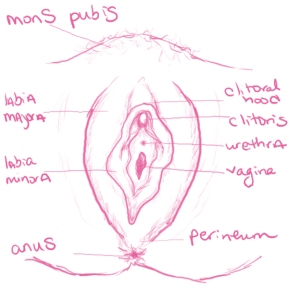Secretary (2002), inspired by a short story by Mary Gaitskill, stars Maggie Gyllenhaal as Lee Holloway and James Spader as Mr. E. Edward Grey. The story follows Lee as she is released from a psychiatric institution and attempts to gain control over her life. In doing so, she takes a job as a lawyer’s secretary. Through Grey’s intense need for control & perfection within the office, a Dominant/submissive power dynamic forms between him and Lee. This dynamic eventually turns sexual, and the two of them are forced to confront questions of love, lust, and intimate relationships in general.
Being one of the few mainstream movies to depict a BDSM relationship, Secretary has gained a lot of attention. In the brief 12 years since its release, it has become a sort of modern classic for many in the community. In fact, I vividly remember the first time that I watched Secretary: sneaking off to my bedroom after my roommates had gone to bed, playing it on my laptop through a pair of earphones. Not only was it thrilling and sexually taboo, but for the first time, I was able to see an important part of my sexuality reflected on screen in a validating way.
Why Secretary is one of my favorite films…
I’ll admit, a small reason why I love Secretary so much is because James Spader has the most amazingly authoritative voice in the world. But the real reason is because BDSM is portrayed as a legitimate option in the realm of human sexuality — an acceptable, shame-free way for two people to find peace within themselves and an intense connection as a couple. Through their D/s romance, the characters grow into better individuals.
Lee finds comfort & cathartic release from BDSM, allowing her to abandon her old, self-destructive habits. She gains confidence in her appearance and her abilities. Through submission she actually learns to speak up for herself and become her own person. Grey also learns to accept himself and his sexual desires. At first, he is almost plagued by his need to be dominant. He battles against it, believing it to be abnormal, unrealistic, or both. But Lee encourages that part of him, allowing him to lower the walls that distanced him from romantic/sexual partners in the past.
The movie also does a wonderful job of not being overtly sexual. There is a concentration on the emotional and mental aspects of a D/s power dynamic with a focus on control/devotion and protection/security. When there are bits of nudity, they are not pornographic; they are intimate.
Why Secretary is not perfect…
Unfortunately, sexual communication is pretty much nonexistent between Grey and Lee for the majority of the film, creating far too many similarities with sexual harassment and assault. There are no discussions about consent or boundaries. They don’t even discuss their intentions, expectations, or desires! Instead, Lee relies on silently manipulating Grey into dominant action, while Grey irresponsibly engages in those actions without getting explicit consent. Though nobody gets physically injured because of this, it does lead to some very uncomfortable sexual activity that can be difficult to watch.
Secretary is also guilty of the very misrepresentations that I mentioned in Popular BDSM Erotica: Damaged & Diluted. My inspiration behind that post, Margot D. Weiss’ article “Mainstreaming Kink: The Politics of BDSM Representation in the U.S. Popular Media” was actually written specifically about this film. In her article, Weiss points out that BDSM is “pathologized” because submissive & masochistic Lee battles a history of self-injury. (Not that there is anything shameful about mental illness, only that it is unrelated to BDSM.) Grey and Lee’s BDSM relationship is also “normalized” when, at the end, they settle into marriage. Although I will argue that they do appear to continue their kinky sex play.
TL;DR
If you haven’t yet seen Secretary, I strongly recommend it. Keep in mind that communication should be part of every relationship, and that Hollywood’s misconceptions of BDSM are still something that needs changing. However, the fact that a D/s dynamic is displayed as a legitimate love style feels like a step in the right direction. In my opinion, Secretary is just too monumental to ignore for those interested in the BDSM lifestyle.
1. Margot D. Weiss. 2006. “Mainstreaming Kink: The Politics of BDSM Representation in U.S. Popular Media.” Journal of Homosexuality 50(2/3): 103-130.
You can also find an electronic copy of the article here.




